Portuguese Architecture in Goa
Coconut trees, beaches and splendid sunsets are the words you associate with Goa. However, most of Goa’s culture is influenced by their old rulers- The Portuguese. In 1510, admiral Afonso de Albuquerque tried to attack Goa but failed. A few months later he captured Goa and defeated ruler Ismail Adil Shah. Albuquerque was quick to win the hearts of the Hindu population which in turn made him the Chief Administrator of the city. Soon enough Goa was made the Portuguese Capital of Asia and was granted the same civic opportunities as Lisbon.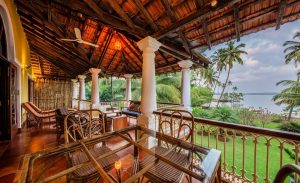
By 1542, Goa was greatly influenced by the Portuguese culture- whether it be food, music, literature or architecture. St. Francis Xavier, a Catholic Missionary, spoke highly of the architectural practices that were taking place and Goa reached its peak during 1575 and 1625. The striking similarities between Goa and Portugal led to a famous Portuguese proverb- “He who has seen Goa need not see Lisbon.”
Portugal Architecture has created a long-lasting impression on the churches and homes in Goa. In present times, Goa is one of the only states in the country that has maintained houses from the 1700s along with the vast architectural creations. The residential homes built during that era are so uniquely created; it is difficult to find something similar to them. Most of these houses can be found in the rural parts of Goa, which include Loutolim and Chandor.
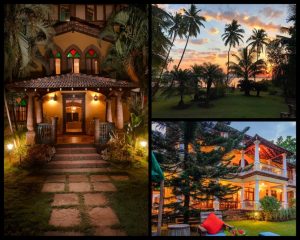
When these houses were created, the materials and techniques used for construction were local. However, all the decorations and furnishing were imported from various parts of the world. Portuguese Architecture has specific characteristics which help differentiate themselves from the new and upcoming construction in Goa which focus on bright blue and red tiles.
Houses in that era usually opened into courtyards and seldom into main streets. Traditional pre-Portuguese homes had small windows which were inward-looking. These were supposed to symbolize that women had a secluded role in society. Railings were the most intricate parts of a Goan house. However, pillars and colours did not seem to be influenced by any particular architectural style.
Apart from residential houses, Goan architecture is particularly striking in the Churches. Most of the Churches were built in the Portuguese Baroque style- a highly decorative and theatrical style. This style, mainly comprised of domes and pillars, are dramatic and grand. The use of light was also imperative to highlight the paintings on the walls and ceilings.
Located on the banks of the Chapora River, Villa Morjim is a heritage delight. Inspired by Portuguese Architecture, it was constructed using laterite masonry with decorative columns and wooden rafters following an elegant style.
To experience a bit of Portugal with beautiful beaches and Goan cuisine, Villa Morjim is the perfect place to visit. The rooms at Villa Morjim all reflect architecture from the olden days.
1. Sala Del Sol (Living Room of the Sun) – This spacious 800 sq. Ft. room has distinct flooring and a private mosaic terrace inspired by the old Portuguese style. The handmade floor is similar to Azulejos, which is a definite Spanish and Portuguese form of tile work.
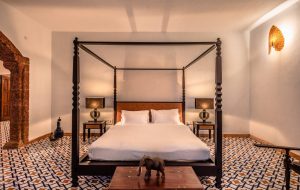
2. Suite Panorámica (Panoramic View) – This suite which is located on the 2nd floor of Villa Morjim has a breathtaking view of the river as well as lush green gardens. You almost feel like you are at the river Zêzere in Lisbon with its dense wild vegetation and spectacular landscapes.
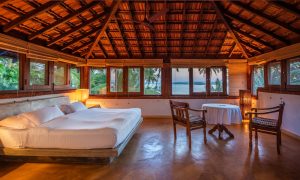
3. Azul (Blue)– This gorgeous room with a King size bed and balcony has an aura of calmness and tranquillity. Azul, which means blue perfectly describes this room for its beautiful views of the Chapora River.
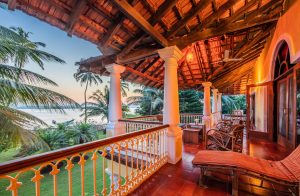
4. Amarela (Love)– Situated on the ground floor of the villa, this room has enough privacy for you and your loved ones. Inspired by traditional four-poster beds with draped curtains, you will not want to leave the room.

5. Jardin (Garden)– Travelling alone? The Jardin room which opens up into the expansive gardens with a private sit-out is a perfect way to spend some time with nature. The antique canopy bed adds to the simple yet elegant vibe of the room.
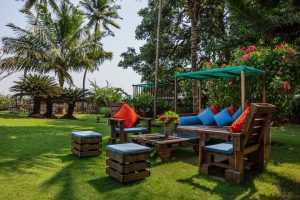
Read what some of our customers have to say on Trip Advisor-
“…My 2nd- floor room was clean & spacious, and its décor exuded tasteful luxury while maintaining a strong sense of authenticity given the Hotel’s Indian & Portuguese design cues. From bathroom-to-bedroom, every element of my quarters felt thoughtfully curated (e.g., the colourful Portuguese wall mosaic in my bathroom shower; a Hotel-customized mattress that offered just the perfect amount of cushion & firmness; unique ceramic blue soap dispensers; etc.).”
– Ben H Pedrosa
“…Villa Morjim- nestled in the fishing village of Morjim in North Goa takes you back to the Portuguese era. Its as if the architecture transpires history into the air as you sit on a reclining chair in the verandah, reading a book or sipping on Feni as you gaze at the Chapora river only a stone’s throw away.”
– Manavi Bhardwaj